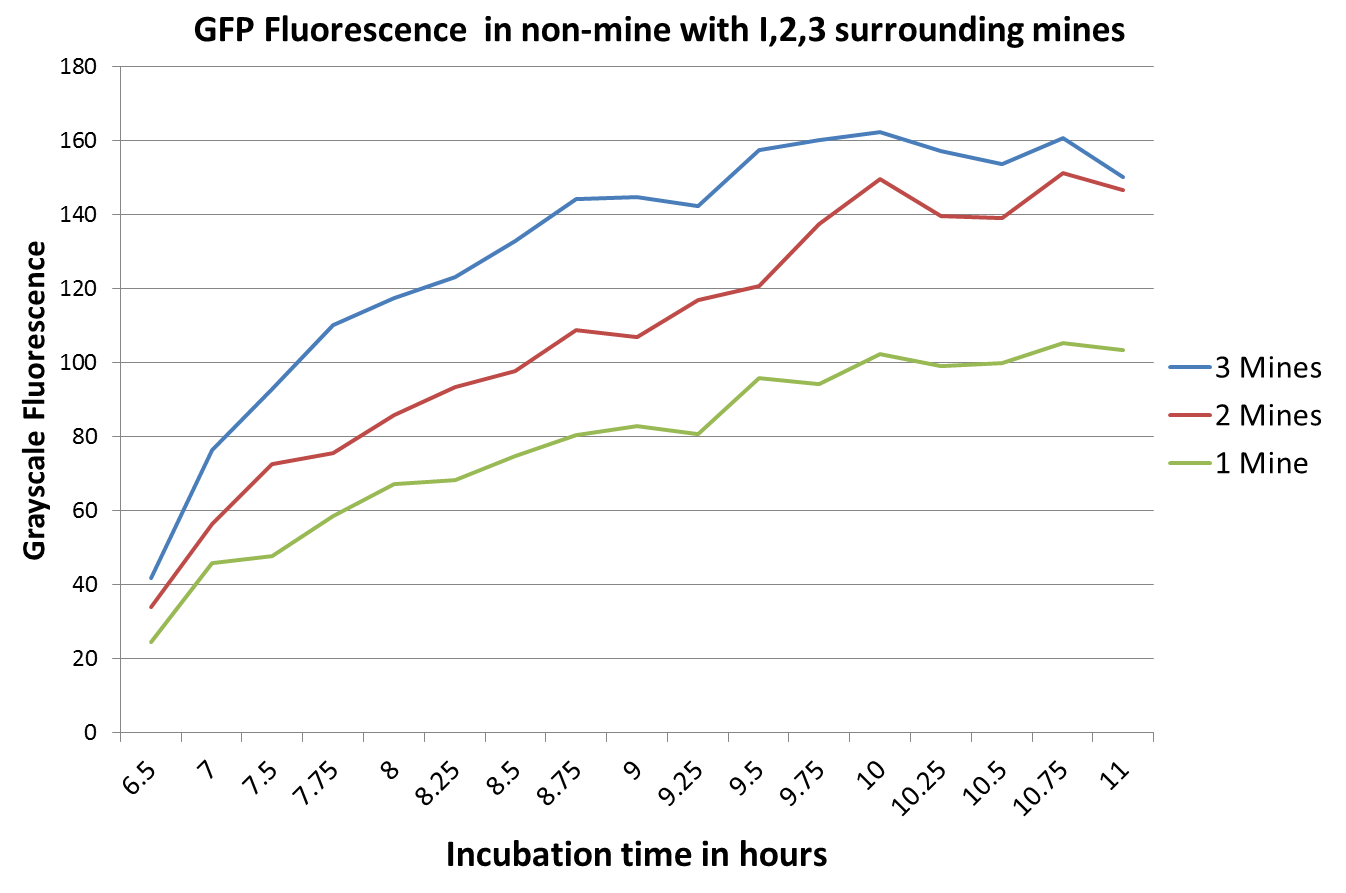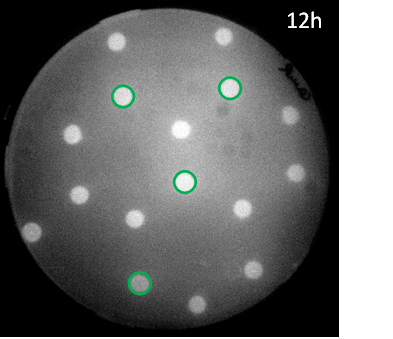Team:ETH Zurich/Experiments 6
From 2013.igem.org
GFP diffusion tests with sender cells and wild-type PLuxR receiver constructs
Diffusion experiments were performed to study AHL diffusion from the sender colonies to the receiver colonies. The sender colonies consisted of the luxI (BBa_K805016) producing AHL under a constitutive promoter. The part BBa_J09855 cloned with GFP was used as our receiver. The colonies were placed in a hexagonal grid pattern such that every colony can have either zero, one, two or three mine colonies adjacent to it. As distance between sender and receiver we choosed 1.5 cm, which was a appropriate distance regarding to our model and previous experiments. Depending on the number of mines around a non-mine colony, more AHL will be processed in the receiver colonies (GFP production) due to the higher number of mines surrounding. 1.5 μl of the receiver and sender cultures were plated according to a hexagonal grid pattern on an agar plate and incubated at 37 °C. We then investigated the diffusion patterns by scanning the plate with a molecular imaging system. Images of the GFP fluorescence were taken at time intervals of 1.5 hours after the first detection of fluorescence. Images taken after 11 hours showed GFP saturation.
The picture on the left shows the scanned image of GFP fluorescence after 11 hours of incubation. The green circles mark the mine colonies. The receiver colonies are those that process the AHL that diffused from the sender colonies. The difference in fluorescence in the receiver colonies correlates directly to the number of adjacent mine colonies. The data from this experiment shows almost complete agreement with the spatio-temporal model.
The graph on the right shows the relative intensity of the GFP signal in the receiver colonies with one, two and three adjacent mine colonies at different timepoints. All scanned images of the plate similar to the one depicted above were analyzed using the image processing program ImageJ. The GFP fluorescence reaches saturation after 11 hours of incubation at 37℃ . Due to the presence of more mine colonies, more AHL molecules are processed by the non-mine and higher fluorescence can be observed. Three adjacent mines lead to the highest value of fluorescence compared to two or one adjacent mine colonies. This data is qualitatively similar to the model, but GFP expression is quantitatively different in comparison to the model.
GFP diffusion tests with sender cells and mutated PluxR promoter receiver constructs
Also the mutant promoter BBa_K1216007 we obtained through site-saturation mutagenesis was tested in the hexagonal grid experiment with LuxI sender cells. The sensitivity for AHL (EC50=12'555 nM) was very low and only in the case where three mines surround a receiver colony some fluorescence could be observed. Still the results are consistent with the model predictions and led to the rational design of additional promoter mutants, where either one of the two point mutions was changed back with the goal to recover some of the sensitivity of the wild type.
 "
"









